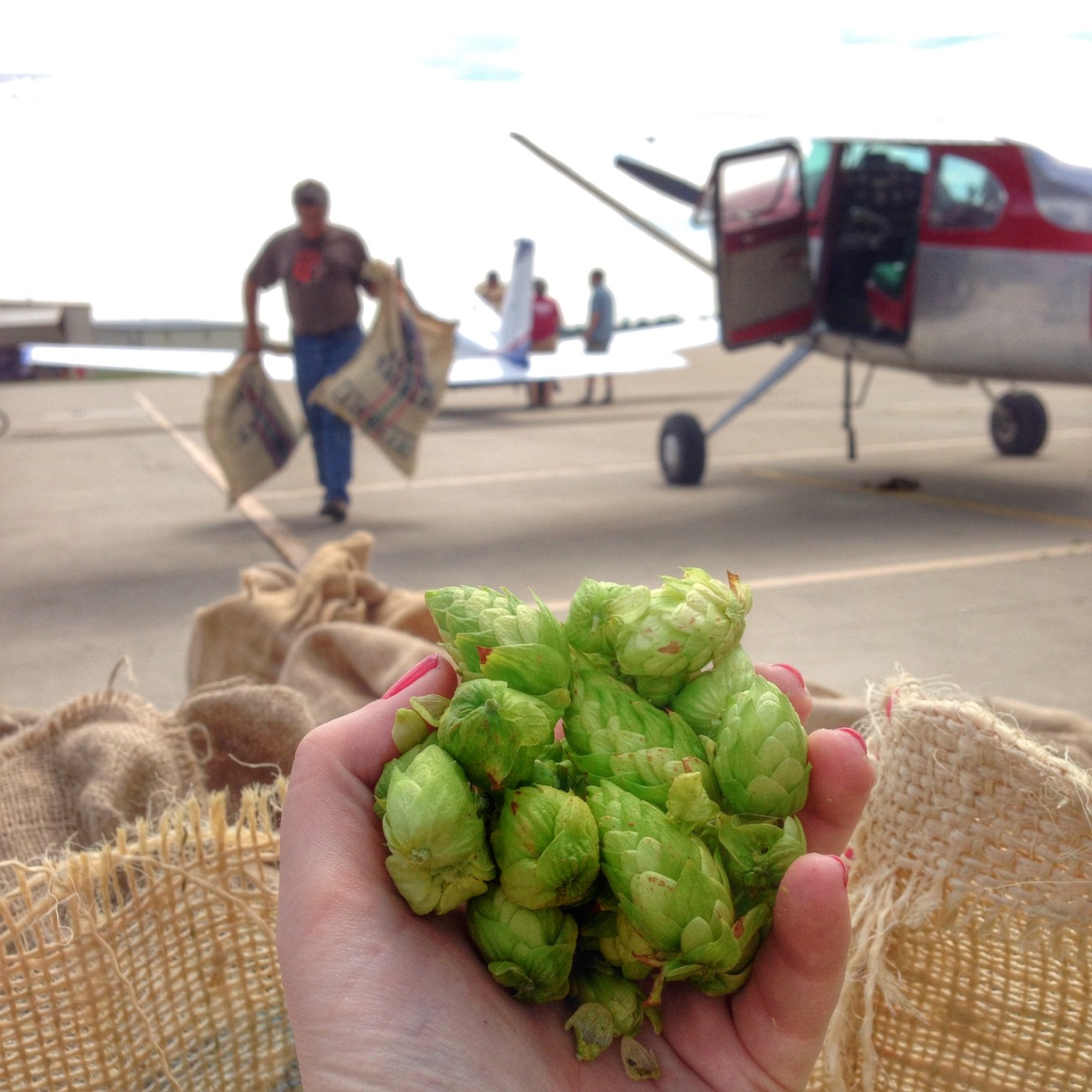The Local newsletter is your free, daily guide to life in Colorado. For locals, by locals.
An airplane, a truck, a handful of workers, 1,000 pounds of Cascade hops, and a ticking clock: All of these ingredients are necessary for Left Hand Brewing Company to concoct its only fresh hop beer, Warrior IPA. Left Hand produces more than 30 year-round, seasonal, and limited-edition beers each year, but Warrior IPA gets special treatment. Fresh (or wet) hop beers are only brewed once a year, immediately after the hop harvest, which usually lands between late August and mid-October. Breweries tend to release a sea of pumpkin and Oktoberfest brews this time of year. Unlike those ales and lagers, however, fresh hop beers are truly representative of the fall season.
Although the beer-making process varies from place to place, brewers typically use pellet hops—hop cones that are dried, finely ground, and formed into small pellets resembling rabbit food. Pellets have a shelf life of up to two years, which means brewers can order them in bulk and store them in the brewhouse until needed. Fresh hops, on the other hand, can expire within hours of being picked.

On harvest day, Joe Schiraldi, the vice president of brewing operations at Left Hand, and a team of employees travel early in the morning to Rising Sun Farms in Paonia. Here, the team handpicks hops row by row, cuts down 18-foot tall vines and feeds them through a hop picker, and loads a third of the hops onto a freight plane. Meanwhile, the brewers have already started the brewing process, and if all goes as planned, the first batch of hops will be delivered by plane by the time they’re ready for the first pitch of hops. Schiraldi and his team load the rest of the hops into a truck and drive through the night, back to the brewery.
Throughout the entire process, Schiraldi and his team must make sure they’re working carefully and quickly. Because hops have high oil content in their lupulin glands—a store of acids and oils that give hops their aroma and flavor—they begin to generate heat when they’re handled too much. The hops can spontaneously combust, and produce a black oily smoke similar to the result of throwing a pine branch over a campfire.
So why go to such great lengths for a beer? Schiraldi says fresh hops give a beer a wider breadth of flavor. Left Hand adds at least five times the amount of hops to a fresh hop brew like Warrior IPA to get the same amount of flavor as a beer brewed with hop pellets. The difference between hop pellets and fresh hops, Schiraldi says, is like the difference between dried basil and garden-picked basil. “Dried basil works well and it has a strong, concentrated flavor,” he says. “When you use fresh basil, you might have to add more to get more flavor. It’s got a really great quality to it, that freshness quality that gives it a more expansive experience.”
Brewed since 2000, Warrior IPA uses the same Cascade hops from year to year, but might not always taste the same. Temperature, rainfall, and amount of sunshine all contribute to how Rising Sun Farms’ hops will smell and taste. “Some years they’re more aromatic, some years they’re less. Some years they’re more piney. Others, more citrus,” Schiraldi says. “If you have a hundred-acre field, the hops at one end are not going to smell and taste the same as the hops at the other end.”
About the Warrior IPA
Flavor profile: A strong malt foundation complements bright, floral hops, resulting in a well-balanced, drinkable IPA.
Style: Wet Hop IPA
Color: Amber
Body: Medium
ABV: 7.3%
IBUs: 60
Hops: Centennial and Colorado Wet Cascade








